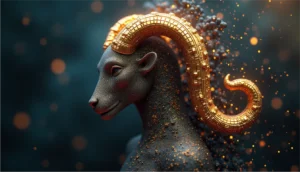GFX: A Graphic Designer's Perspective on Visual Storytelling and Digital Art

In the world of design, GFX (Graphics) is more than just a tool—it’s the language through which designers communicate complex ideas, evoke emotions, and tell stories. Whether it’s an eye-catching logo, a well-designed website, or a powerful advertisement, GFX plays a crucial role in shaping how brands, products, and messages are perceived. Whether working with traditional or digital mediums, AI-driven tools are enhancing the capabilities of GFX. As graphic designers, understanding GFX goes beyond just mastering software—it’s about mastering the art of visual storytelling. Consequently, AI can help in conveying messages in the most engaging and efficient way.
Understanding GFX in Design: A Tool for Creativity
Defining GFX: A Tool for Visual Communication
GFX, short for graphics, is the visual representation of ideas using digital tools. In graphic design, it encompasses everything from creating logos, brochures, and websites to motion graphics and interactive content. As a result, GFX is an essential medium for designers to convey information in a visually appealing and effective manner. Moreover, AI technologies provide new opportunities for designers to enhance their workflows and creativity. 
Key Principles of GFX Design
When it comes to GFX, certain principles govern how designs are created. These include balance, contrast, alignment, repetition, proximity, and white space. Additionally, AI tools can assist designers in perfecting these principles by analyzing designs and suggesting improvements. Thus, AI can streamline the process of creating balanced and visually pleasing designs, ensuring that communicates its message effectively. Therefore, designers can create impactful visuals quickly and efficiently.
The Importance of Visual Communication in GFX
At its core, graphic design is all about visual communication. GFX allows designers to create powerful visuals that convey messages instantly. In a world where first impressions matter, is the key to grabbing attention and making a lasting impact. For instance, integrating AI can significantly enhance how GFX communicates by personalizing and optimizing visuals for different audiences. As a result, delivering tailored experiences is more achievable.
Tools and Software Used by Graphic Designers in GFX
Industry-Standard GFX Software (Photoshop, Illustrator, etc.)
Graphic designers use a variety of tools to create their GFX masterpieces. Software like Adobe Photoshop and Illustrator remains the backbone of the design industry, providing designers with a range of features to create intricate designs. In addition, Photoshop excels in photo editing, image manipulation, and texture creation, while Illustrator is perfect for vector graphics, logos, and illustrations. As a result, AI is starting to integrate into these tools, offering new features like auto-generation of design elements and intelligent suggestions. Moreover, AI can simplify tedious tasks, resulting in faster production times.
Emerging Tools and Trends in GFX Design
In recent years, new tools like Procreate (for digital painting) and Affinity Designer have gained popularity. Furthermore, Figma has revolutionized collaborative design work, particularly for web and UI/UX design. Furthermore, AI tools such as design assistants are rapidly changing the landscape of GFX. Thus, designers are now leveraging AI to stay ahead of trends and create innovative designs faster, consequently driving industry progress.
Types of Graphic Design: GFX in Action
Digital GFX Design
Digital design is the heart of modern GFX. This includes everything from website design to digital illustrations, where graphics are created for screens. Hence, digital design requires an understanding of resolution, aspect ratios, and color calibration to ensure designs look great on various devices. Additionally, AI-powered tools can further assist designers by optimizing images for different screens, making the process faster and more efficient. Thus, AI helps streamline design consistency across all devices.
Print GFX Design
Print design, though somewhat traditional, still plays a significant role in GFX. It involves creating posters, brochures, and other physical materials. Moreover, print design requires attention to detail in terms of color accuracy, typography, and layout to ensure the final product looks just as intended. Therefore, AI can predict how a design will appear in print, assisting designers in making real-time adjustments for accuracy. Furthermore, AI can suggest improvements to optimize visual appeal.
Branding and Advertising with GFX
Graphic design plays a crucial role in branding and advertising. A well-designed logo, color scheme, and set of visuals can significantly impact how a brand is, firstly, perceived. Consequently, effective advertising uses GFX to create persuasive visuals that engage the audience and promote the brand’s message. As a result, with AI tools, these processes can be made even more efficient by analyzing audience responses and tweaking designs accordingly. Therefore, designers can quickly adapt their visuals for maximum effect.
Web GFX Design
Web design is a subset of GFX that focuses on creating visually appealing and user-friendly websites. This involves designing layouts, choosing typography, and creating images that enhance the user experience (UX). Furthermore, in today’s digital age, web design has become an essential skill for graphic designers. Additionally, AI can assist in web design by offering predictive design layouts and optimizing user interfaces for maximum engagement. Thus, AI can enhance the overall functionality of websites.
Motion GFX Design
Motion graphics is a dynamic field of graphic design that involves creating animated visuals. This could include everything from animated logos to full-length explainer videos. Hence, motion design combines elements of animation and graphic design to create engaging, attention-grabbing content. Importantly, AI is now being used to automate certain aspects of motion design, speeding up the creative process and introducing new possibilities. Therefore, designers can create complex animations in less time.
Core Elements of GFX and AI Design
Color Theory in GFX Design
Color is an integral part of any graphic design. It sets the tone, communicates emotions, and creates visual interest. Understanding color theory—how colors interact with each other and the psychological impact they have—is essential for creating effective GFX designs. Consequently, AI can assist in choosing the best color combinations for a design, improving the overall aesthetic appeal. Furthermore, AI can analyze design trends and suggest color palettes that are currently popular.
Typography: More than Just Letters in GFX
Typography is another core element of GFX design. The typefaces chosen can dramatically change the perception of a design. Whether it’s bold, playful fonts for a youth-oriented brand or sleek, modern fonts for a tech company, typography helps define the overall look and feel of the design. Thus, AI-driven tools can analyze typography choices and recommend variations to ensure readability and visual impact. Therefore, typography can be optimized for both aesthetics and function.
Composition: The Art of Balance in GFX
Composition is about achieving balance, alignment, and harmony between visuals and text. A well-composed design guides the viewer’s eye through the visual elements in a natural, effortless flow. Consequently, composition is crucial for all types of GFX work. Additionally, AI can assist designers in optimizing the layout by offering grid systems and balance suggestions based on design principles. Thus, AI helps achieve perfect composition quickly.
Visual Hierarchy in GFX and AI
Visual hierarchy refers to the arrangement of elements in a way that prioritizes certain information. Therefore, effective use of size, color, and placement can guide the viewer’s attention to the most important aspects of the design. As a result, GFX designs with strong hierarchy convey the intended message clearly. With AI, designers can further enhance visual hierarchy by automatically adjusting elements to highlight key messages. Consequently, AI can help establish a clear focus in designs.
Creative Process in Graphic Design and AI
From Concept to Final Design: The Designer’s Journey in GFX
Every graphic design project starts with an idea. Designers begin by brainstorming, sketching, and experimenting with different concepts before moving on to digital execution. As a result, the process involves refining and adjusting designs, getting feedback, and ultimately delivering the final product. Therefore, GFX design is a constant evolution from concept to final execution, and AI tools can assist in each stage by generating ideas and refining designs.







